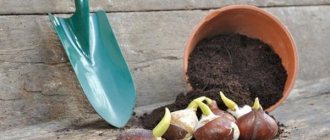Features of growing and caring for violets
The main conditions that such flowers need to create are warmth, bright light, and high humidity. They should be placed in a well-lit place with diffused lighting and at the same time protected from sunlight. Daylight hours should be 13-14 hours. In winter, additional lighting needs to be installed.
The optimal place for the flower to grow is north-eastern and north-western window sills. When grown on the south side, shading is needed.
Did you know? A collector from Odessa collected 3.5 thousand varieties of violets in his apartment, including those grown by astronauts in orbit. This is the largest collection in Europe. It takes a gardener 800 liters of water a week to water his flowers, and he spends $30–40 a month on lighting them.
The best decorativeness and stable growth are observed in those plants that are grown at temperatures of +20...+22°C.
Violets cannot tolerate 3 mistakes in care:
- excessive and frequent watering;
- exposure to drafts;
- severe drying out of the soil.
Therefore, the flower must be protected from these factors.
Watering should be moderate and must be carried out in a tray or using a wick method (connecting a pot with a violet and a container with water using a cord, through which water seeps). It is recommended to perform 1-2 moisturizations every 7 days.
For irrigation, use rainwater, filtered water, or water that has been left standing for 2 days at room temperature. After 30–40 minutes have passed after moistening, the remaining water in the pan must be drained. There is no need to allow it to stagnate - this increases the risk of root rotting.
The flower does not like spraying. To maintain the required high air humidity, at the level of 60–70%, you need to install a humidifier, wipe the leaves with a damp cloth, spray the air next to the flower so that drops do not fall on it, place the pot on a tray with wet pebbles or expanded clay.
Important! It is not recommended to water the violet from above. Drops falling on leaves and stems can cause the development of burns and rot.
During the growing season, flowers need to be fed. This will help preserve the beauty of the leaves, achieve long and abundant flowering, and the health of the bush. At a young age, more nitrogen-containing fertilizers are applied, at a mature age - potassium and phosphorus. Use liquid root baits designed specifically for violets.
Violets degenerate very quickly and are usually renewed every 2-3 years. Transplantation is carried out once a year using the transshipment method.
These flowers can grow in any pots - plastic or ceramic. But it is important to select them according to the size of the plant, because in fairly large containers they will refuse to bloom, and in small containers they will grow poorly. It is also important that the pot has drainage holes.
In specialized stores you can purchase special pots for violets - they have a place for draining unnecessary water and a special hole for supplying moisture.
Choosing a pot
Many novice violet lovers complain that violets take a long time to bloom. However, if during transplantation you look at the root system of this little one, you will understand that it is very small and does not require much soil at all.
There is no need to select a large and deep pot for violets. In addition to the fact that it will look ridiculous, the soil in it will turn sour, which will lead to diseases.
The biology of violets is such that the soil mixture must dry out from watering to watering, and only a small amount of soil can ensure this process.
For an adult violet, the diameter of the pot should not exceed 7-8 cm, and small rosettes are planted in pots with a diameter of 3-4 cm. After growing, the bushes are replanted using the method of transshipment with an earthen ball.
There are times when it is urgently necessary to transplant a violet into another pot at home. If a broken flower pot is carelessly broken, you can replace it with any one identical in size, if the violet felt good in it.
When transplanting a flowering plant, there is no need to water it with rooting agents, but if the plant is in a dormant period, then the root solution will be very useful.
What pots are needed for violets?
When choosing which pots to plant violets in, you need to select ceramic and plastic products. Metal, cardboard, and glass containers are not suitable.
Cut-off bottles and plastic cups are also a bad choice because they not only look unattractive, but can also become moldy over time.
Clay pots
In a clay pot, plants grow better and bloom luxuriantly. This is due to the fact that a clay pot, unlike a plastic one, is still made of natural material.
Such flowerpots allow air and moisture to pass through well. This means that the root system in them does not rot or become sick. Although, like everything natural, these pots are vulnerable and break quickly. They require more careful care. After use, clay vessels are washed with water and boiled.
Clay containers are expensive and heavy in weight, so they cannot be placed on glass racks or fragile shelves. In addition, the clay pot gets very hot in the sun, which causes the soil in the tank to dry out.
And if violet is usually unpretentious to water, then in a clay pot it requires constant watering. The size of such a flowerpot should be acceptable to the size of the rosette; a hole must be made at the bottom.
Plastic
Plastic pots for violets may have bright colors and look good in the interior, but the material can be toxic to the root system of the flower. It is allowed to purchase products made of high-quality plastic; It is recommended to avoid those that are too cheap.
Plastic pots work better. They are flexible, lightweight, and will last for a long time. Thanks to its flexibility, it is easy to transship. The only negative side of this choice of container for growing violets is the difficult passage of oxygen through the dense walls. This problem can be solved by making several holes in the bottom and side surfaces.
Suitable size
The pot for violets should be compact in size. You should not buy pots with a large diameter: a houseplant can simply die in them. The thing is that until the rhizome of the flower fills the flowerpot, you will not be able to grow a violet. As for depth, there is no need to overdo it here either.
This is interesting: Pot size for violets: what is the optimal volume and diameter of the pot
If your indoor plant is already mature, the maximum height of the pot can be approximately 9 cm. Its height should also be similar. Let's say that after some time the volume of the violet pot may seem insufficient to you. But it is not recommended to take risks and buy a larger pot. Simply transplant the plant into a similar container, thoroughly shaking off the earthen lump from the roots.
For those gardeners who have recently purchased a mini-violet, the best option would be a pot with a height and volume of 5 cm or 7 cm (if we are talking about a medium-sized flower).
When growing violets, remember that the size of the violet pot is of great importance. If you purchase a container that is too large, the plant will grow new leaves, but flowering may not occur. In addition, if the soil in the pot is not filled with rhizomes, it turns sour, and the likelihood that parasites will soon appear in it increases significantly.
Required soil composition for violets
For normal growth and development of a flower, it needs a special soil - loose, light, with good air and water permeable properties. Its acidity level should be between 5.5–6.5 pH. Ignoring this indicator leads to the fact that the plant poorly absorbs nutrients from the soil and stops growing.
Changes in leaf color may also occur. Acidity is reduced by adding dolomite flour to the soil. Increased by mixing peat.
The soil mixture for planting violets must include the following mandatory components:
- nutrient soil;
- fillers;
- drainage.
Nutrient soil
The basis of the soil mixture is:
- leaf soil;
- turf.
Leaf soil is collected under deciduous trees. Turf - in areas where perennial grasses grow. Soil should be taken from clean areas, away from landfills, trash cans, and polluting enterprises.
Vermicompost and compost can also be considered as the main substrate.
Fillers
Fillers for soil for planting violets are:
- coniferous soil - it is extracted from the lower soil layer in areas where conifers grow;
- peat soil.
Moisture holders and leavening agents
The main mixture is supplemented with the following loosening components:
- vermiculite;
- perlite;
- charcoal;
- sand;
- sphagnum moss;
- coconut fiber.
Good drainage is important for violets. It is necessary to drain water, prevent its stagnation and the development of rot.
Drainage is made from:
- expanded clay;
- pebbles;
- broken bricks;
- coarse sand;
- charcoal.
Habitat
The soil in which Saintpaulias grow naturally is not particularly rich. But it contains all the necessary substances, albeit in small quantities. It is also optimal for homemade violets. Sometimes novice violet breeders face a number of problems. Having bought bushes or “babies” of violets in the store, you return home satisfied with your purchase, and then suddenly it turns out that the plants often die once they get into the apartment. They are weak, take root poorly, rarely sprout, bloom little and often get sick. There is only one reason for this - they are grown on artificial soil. Once in your house, they are deprived of additional complementary feeding in the form of all kinds of additives and therefore die.
What kind of soil does violet like? In the natural environment of Saintpaulias, the soil is a mixture of sand, peat, moss, humus, charcoal, rotting organic matter and a small amount. The conditions in their habitat are quite harsh, and this is what provides the plants with high “survivability”.
How to choose ready-made purchased soil
Soil for planting flowers can be purchased at a specialty store. The packaging of suitable soil states: “Saintpaulia”, “Violet”, “For sowing seeds and planting seedlings”.
The most popular manufacturers:
- ASP GREENWORLD;
- "Terra-vit";
- "Academy of Growth";
- "Bereginya."
The purchased substrate has one important advantage - it is already pickled and ready for planting. It contains no bacteria, fungi, microbes, or pests, so it does not need additional processing, you can only pour boiling water over it - while hand-made soil is subject to mandatory disinfection.
The disadvantage of this soil is that it is very light: when watering, all the water passes through it without stopping and settles at the bottom. Because of this, many gardeners prefer to supplement purchased soil with various additives.
One option: mix 5 liters of prepared soil with 0.5 liters of vermicompost, 0.5 liters of perlite, 0.5 liters of vermiculite and 0.5 liters of finely chopped sphagnum. Such soil will have all the necessary properties for comfortable violet growth.
Also, some gardeners buy a base for soil and add elements like the above to improve its characteristics. Usually the soil is taken from high-moor peat.
Did you know? Violet is valued for its delicate aroma. The violet scent is included in perfume compositions by famous perfume brands such as Dolce & Gabbana, Hugo Boss, Elizabeth Arden, Gucci, Christian Dior.
How to make a substrate with your own hands at home
There are several recipes for making soil mixture for violets. Each violet owner can choose a ready-made one or create his own, combining the ingredients listed above. The main thing is that the end result is a loose, light, homogeneous substrate that can conduct air and water well to the root system.
We invite you to familiarize yourself with one of the most accessible recipes.
DIY soil mixture for violets: video
It will require:
- light loose ready-made substrate on high-moor peat containing nitrogen, phosphorus, potassium and microelements - 10 l;
- crushed activated carbon - several tablets;
- agroperlite - 1-2 pinches;
- vermiculite - 1-2 pinches.
All ingredients are combined in one container and mixed well.
Important! When working with components, it is necessary to protect your hands with rubber gloves, and your respiratory tract with a respirator. Dust from agroperlite microparticles can settle in the lungs and cause serious harm to human health.
Saintpaulia
Violet is very demanding of good soil, so the “dig near the house” option is not suitable for it. In such local soil there will be a mass of fungi, viruses and bacteria, and Saintpaulia is a delicate plant and can easily die from the slightest disease. Moreover, the soil for indoor violets must contain a certain amount of nutrients, and the acidity level should approach slightly acidic. The soil should be loose and have good breathability; it is unlikely that lawn soil will meet all these nuances. Beginning violet growers are often disappointed. Watering was rationed, lighting was good, but the plant suddenly died, and why is not clear. The reason, in addition to possible infections, may be excessively nutritious and dense, heavy soil - it is completely unsuitable for the root system of violets.
Earth laying technology
Do-it-yourself soil must be disinfected - poured with a 1% solution of potassium permanganate or heated in the oven (microwave) at a temperature of +90...+100°C.
After the soil has been disinfected or spilled with boiling water, it must be left for a month to restore its properties. Then they fertilize it and begin the process of placing it in a pot.
The laying technology is as follows:
- Place a drainage layer on the bottom, which should occupy 1/3 of the height of the pot.
- Cover with a small layer of soil.
- Set violet roots.
- Cover with the remaining soil without compacting it.
When placing a flower in the ground, you must ensure that the growing point is not covered, the roots are not bent, and the lower leaves do not touch the ground. The first watering will need to be done after a week, and the first fertilizing - no earlier than 2 weeks later (if additional fertilizers were not applied during planting).
To summarize, we note that growing violets involves certain hassles. The most important thing is to choose the right place for it with good lighting and the recommended soil composition, as well as to ensure proper watering. But all the care efforts are more than compensated by the unique appearance of bright and abundantly blooming violets.











